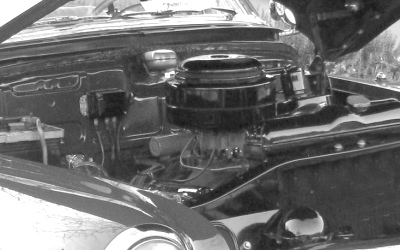The Minotti-Gilmore House
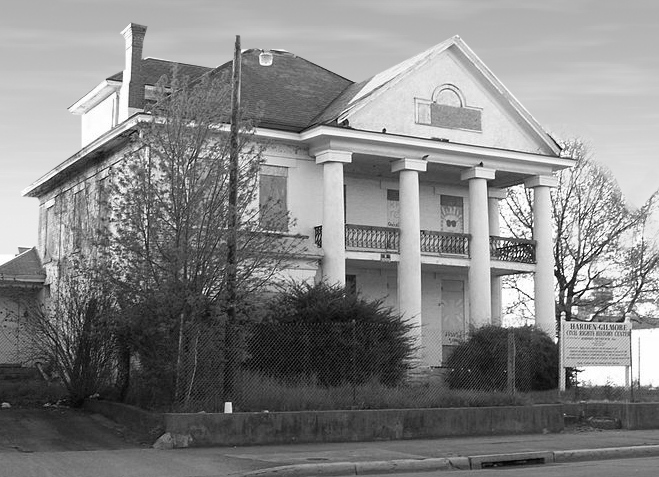
| This imposing structure is one of only two houses left standing on Broad Street (Leon Sullivan Way).
Oddly enough, they were both funeral homes at one time. This
house was built by an immigrant from Italy, Dominic Minotti.
The home, constructed by 1900, is a
two and a half story, brick Classical Revival style
residence,with a columned portico. That an immigrant
could do so well in America is a testament of hard work and why,
people from around the world flocked to the U.S.. It's probably
one of the reasons why there were so may Italians in this area.
Leonoros restaurant was just across the street, and many
Italian business and homes were nearby. Lets take a further look
at the history of this house.... |
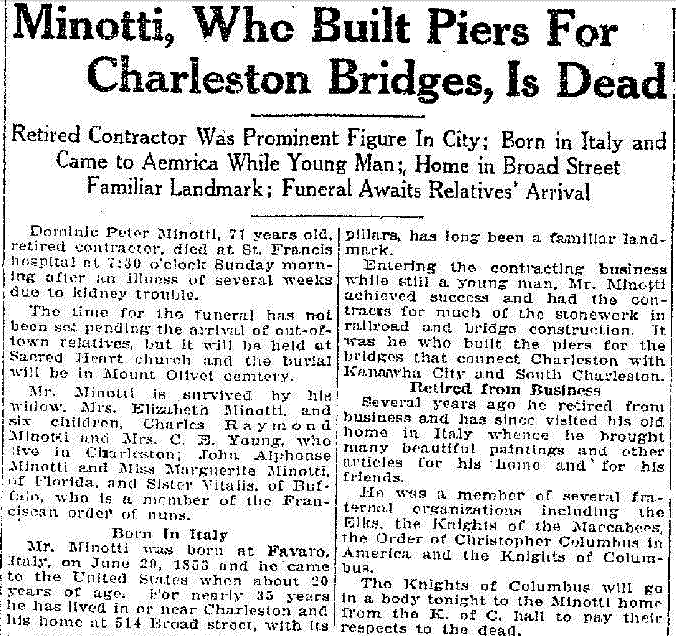
| Daily
Mail article from 1925. Minotti's wife would die about 12 years
later and the property became a boarding house for awhile. In the
meantime, the house was put up for sale.... |
ENTER HARDEN-GILMORE 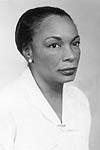
Elizabeth Harden Gilmore lived and worked in
this house from 1947 until her death in 1986. Miss Harden was the very first female mortician in the state. See more at the bottom of this page. 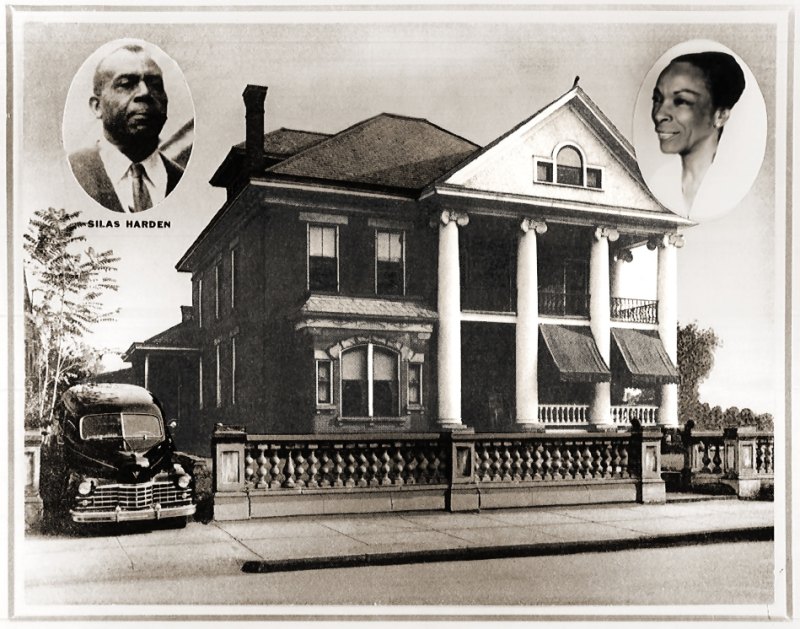
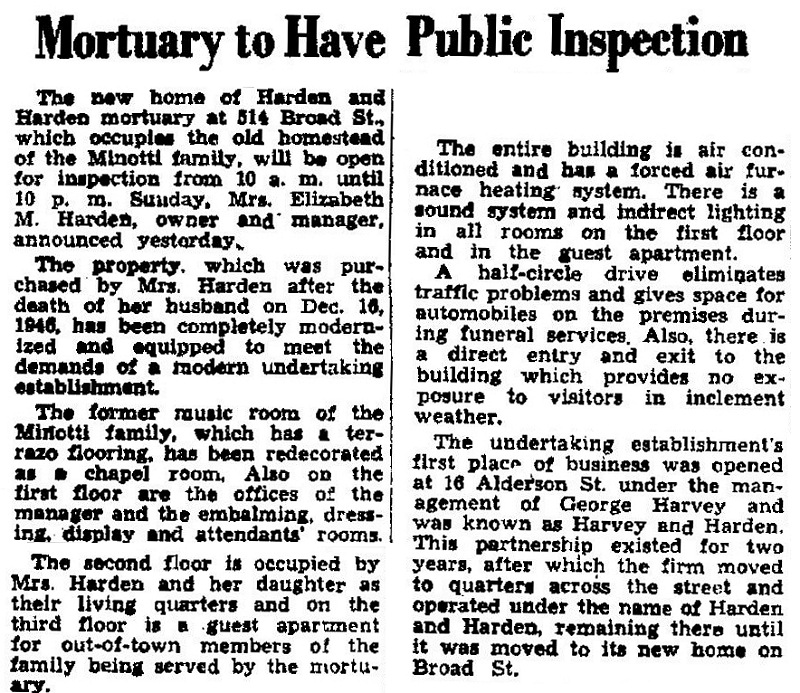
MISS HARDEN AND MY FIRST CAR When
I turned 16, I wanted my own car to drive. Problem was that
as a poor kid, I didnt have much money. I knew Miss Harden (what
we called her) from simply growing up in the area. I'd see her
out all the time and she knew my family. Somehow, it was brought
to her attention that I needed a car. I received word one day to
go over to the funeral home and talk to her. She told me that she
had a car, a funeral family car,
that I could have for $50! We walked out back where the cars
were kept, and there.... looking showroom new... was a 1950 Cadillac
Family Car in forest green. As I recall, the car had around 31
thousand miles on it.
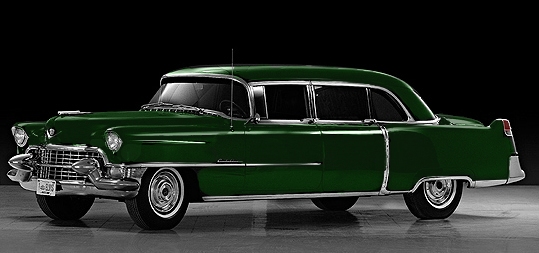
My
car looked close to this in body style. It was really long, a 4 door with a
rear seat area that was so large, it had jump seats in it.
These were fold down seats facing rearward so that the
family could sit facing each other. This car was HUGE, and an
early Automatic to boot. This meant that after you stepped on the
gas, you could wind your watch as you got up to speed because you had
plenty of time. Showroom new... $50. Breaks my heart when I think of it.
I
had the car less than a day when I came to a stoplight and the car
died. I was pretty sure that it was the generator because the car
simply died and had no power. I knew little about cars at the
time, especially cars that were the exact same age as I was. So
since I was close to the funeral home (by a matter of feet actually)
I went to Miss Harden and asked for my $50 back. Without question
or hesitation she gave me back my money. I sure wish I had that
car today...
|
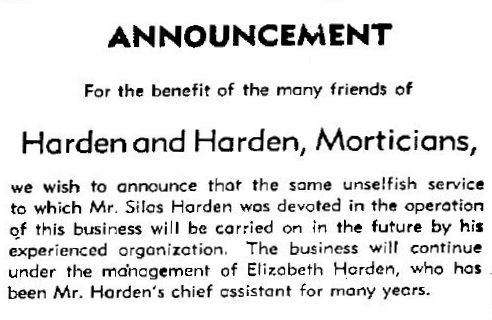
Miss
Harden would occasionally stop by Bernies, my Aunt & Uncles
beer joint for a bowl of soup. It was more a neighbood tavern
that sold hotdogs & soups, and Elizabeth spent some time
talking to my grandmother who also worked there.
Now, to finish this up with a mystery..... |
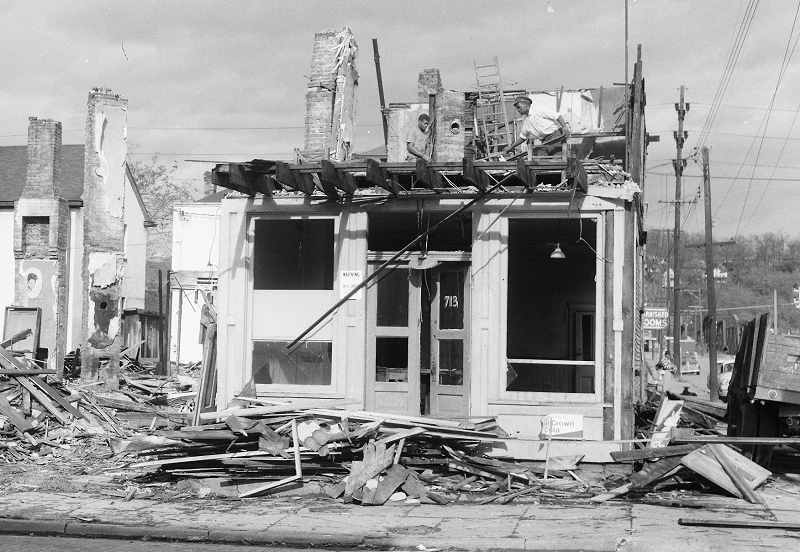
| This photo was takem on Court & Dryden Streets at the very start of Urban Renewel. See this same photo earlier HERE.
You can see the railroad bridges that cross the Elk River on the
right. But look to the left: See that painting?
Let's blow it up a bit...... |

| This
painting on the wall area of the chimney is of a woman named Edith
Brown. Elizabeth Harden had a sister named Edith Brown and
Elizabeth owned several pieces of property on Court Street.
Was that her sister that someone skilfully painted on the wall?
I would bet money that it is. |
The Minotti-Gilmore House is a
landmark placed on the National Register of Historic Places in 1988.
Elizabeth
Harden Gilmore was the first African American woman licensed as a
funeral director in Kanawha County, West Virginia in the late 1930s.
She opened the Harden and Harden Funeral Home in 1947.
Gilmore
also pioneered in efforts to integrate West Virginia’s schools,
housing, and public accommodations and to pass civil rights legislation
enforcing such integration. In the early 1950s, before the Brown v.
Board of Education decision mandating school desegregation, Gilmore
formed a women’s club which opened Charleston’s first integrated day
care center. At about the same time, she succeeded in getting her black
Girl Scouts of the USA troop admitted to Camp Anne Bailey near the
mountain town of Lewisburg.
She also co-founded the local
chapter of the Congress of Racial Equality (CORE) in 1958, and led CORE
in a successful one-year-long sit-in campaign at a local department
store called The Diamond.
During the 1960s, Gilmore served on
the Kanawha Valley Council of Human Relations, where she participated
in forums on racial differences and where she helped black renters,
displaced by a new interstate highway, find housing. She led a
successful push to amend the 1961 state civil rights law won her a seat
on the powerful higher-education Board of Regents. Gilmore was the
first African American Elizabeth Harden Gilmore House, which is also
known as Minotti-Gilmore House or Harden and Harden Funeral Home, is
now a historic home and national historic district located at
Charleston, West Virginia. It is a 2 1⁄2-story, Classical Revival brick
detached residential dwelling built by 1900 on an approximately
one-half acre lot in a business area of town. It features a columned
portico and has undergone some alteration and deterioration.
source:
https://www.nps.gov/nr/travel/civilrights/wv1.htm
|

Back to index
|





